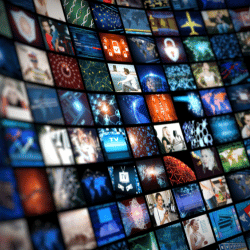
For every broadcasting organization, sports broadcasting may be a vital component. A superb sports broadcast may build a devoted fan base, increase ratings, and keep viewers interested. Improving your sports broadcast is crucial if you want to provide your audience with an excellent experience and maybe boost ad income. These are some pointers to improve your broadcast game using Data Visualization.
Data visualization
A lot of data is produced by sports broadcasts, including player statistics, score updates, and game highlights. Companies that broadcast television can utilize data visualization tools, such as heat maps, charts, and graphs, to show this data in an eye-catching manner. You may utilize augmented reality to further increase the stakes by getting your audience more involved with the data. This can provide spectators with a greater understanding of the game as well as more information on the teams and players.
 Why Data visualization is important?
Why Data visualization is important?
The amount of data will continue to increase tremendously as more and more electronic gadgets are used to link the world. According to IDC, by 2025, there will be 175 zettabytes of data in the world.
But most importantly, the average human brain finds it difficult to understand all of this data; in fact, it finds it challenging to understand complex numbers. Data visualization thus helps in breaking down complex information into bite-size ingestible forms. Big data is, after all, meaningless if it cannot be interpreted and utilized in a practical manner. Because of this, data visualization is crucial to a wide range of fields, including economics, research, technology, healthcare, and especially sports.
Guidelines for implementing data visualization in sports broadcasts
- Clarity and Simplicity: Steer clear of extraneous detail and clutter in your visualizations, and make them straightforward to interpret. Make use of easy-to-interpret sports data graphics, and charts to efficiently communicate information without overloading users.
- Relevance: Pay attention to presenting information that improves the broadcast's value and the viewer's comprehension of the game. Emphasize important data, patterns, and observations that support the narrative of the game and give more context to the on-field action.
- Real-Time Updates: To keep viewers up to date on the most recent happenings, try to include real-time data updates in the broadcast. A few examples of this would be player statistics, live scoreboards, and in-game analyses to keep users interested.
- Interactive Components: Provide users with interactive visualizations so they may investigate data at their own pace. Interactive touchscreens allow users to modify the broadcast data visuals to suit their needs.
 What are the other ways to improve your broadcast game?
What are the other ways to improve your broadcast game?
Automation of data and broadcast
Many components of a sports broadcast, like changing camera angles, putting graphics in, and modifying audio levels, may be automated with broadcast automation software. This can lighten the production team's effort and assist the broadcasting firm in providing a more consistent watching experience. Additionally, by using external data sources, you may improve data scouting and benefit from data automation.
Cloud-based manufacturing
Using cloud-based gear and software, cloud-based production enables media organizations to remotely construct a sports broadcast. Because the production staff may operate remotely, this can assist in saving costs and boost flexibility. Moreover, real-time team cooperation via cloud-based production facilitates simpler coordination. Because cloud-based productions often save costs, they're also a terrific tool to let smaller businesses create and broadcast real-time visuals.
AI
Real-time sports data feeds, player recognition, autonomous camera tracking, and other components of a sports broadcast may all be improved by artificial intelligence (AI). In order to interact with spectators, AI may also be used to create highlight reels and game summaries that can be posted on social media and other websites.
Sound quality
In order to put viewers at the center of the action during a television broadcast, audio is just as crucial as image quality. The way sports broadcasts are perceived has been completely transformed by technological advancements in audio, such as spatial surround sound, which gives spectators the impression that they are actually there. Fans may enjoy a more realistic and immersive audio experience from the comfort of their homes by being able to hear the sounds of the game, the intensity of the crowd, the players on the field, and the commentators.
There are a number of technology strategies that can enhance the audience interaction for sports broadcasters. A few of these include the use of artificial intelligence, broadcast automation software, data visualization tools, and audio quality enhancement. Broadcasters may use data to tell engaging stories, draw viewers in, and improve the overall caliber of their sports broadcasts by utilizing Data Sports Group's experience in data visualization and sports data APIs. To know more get in touch with our team of experts today!










